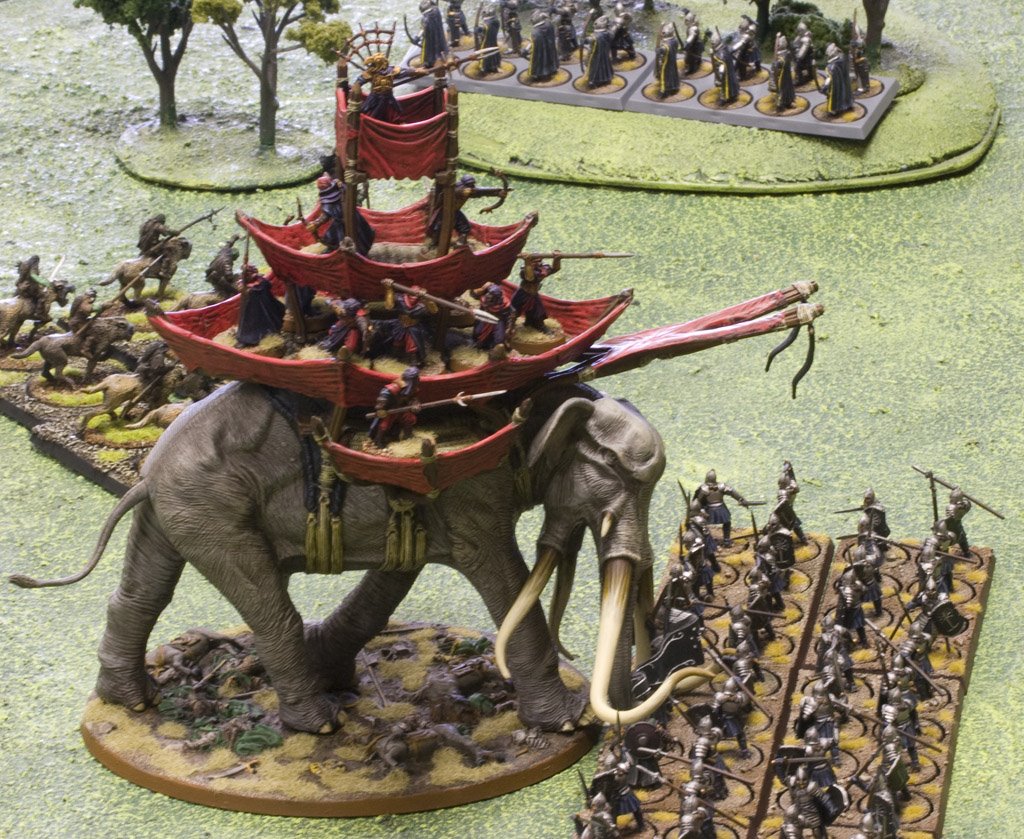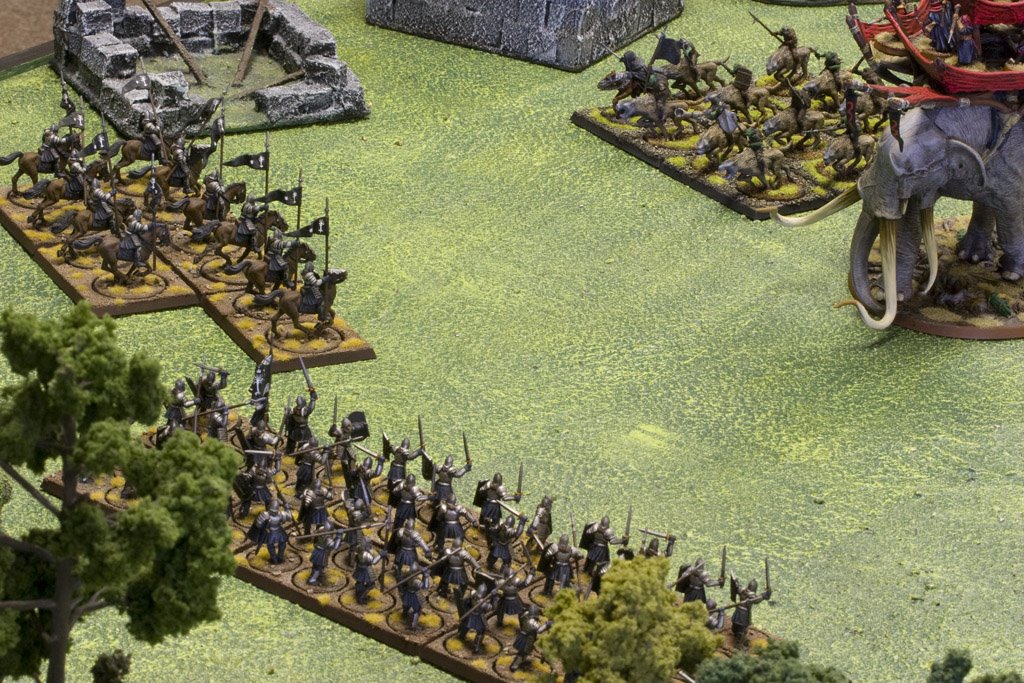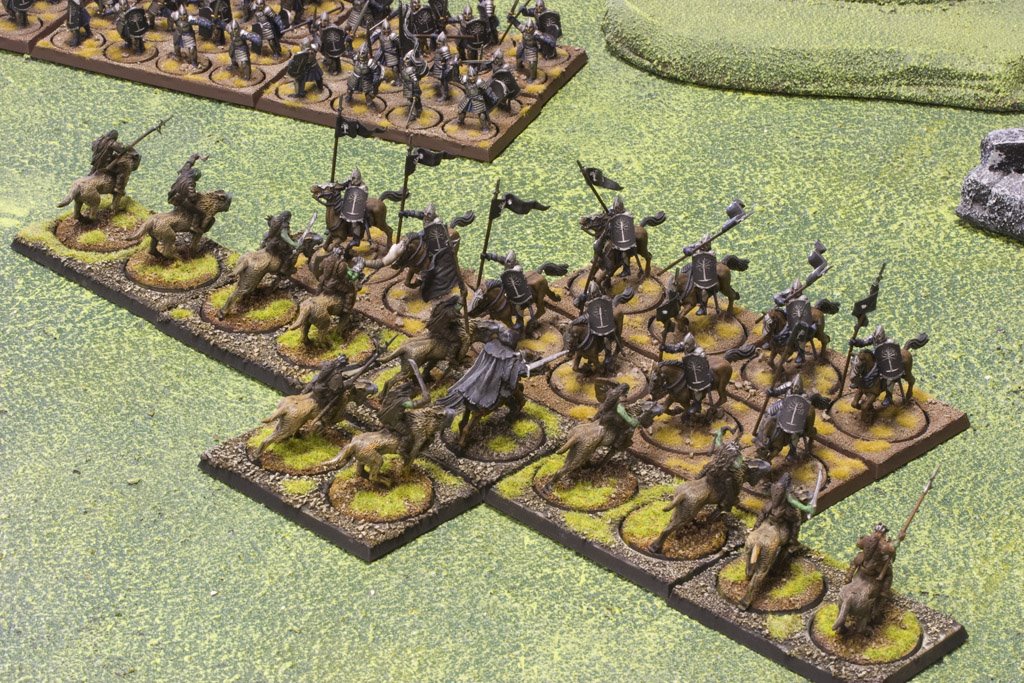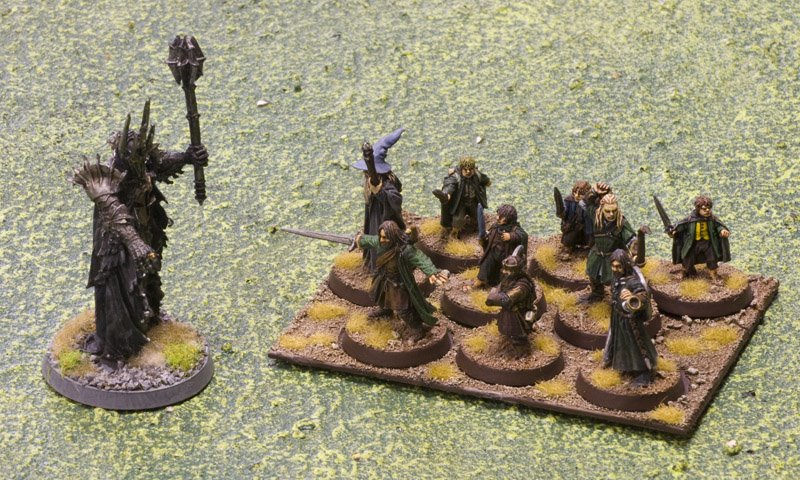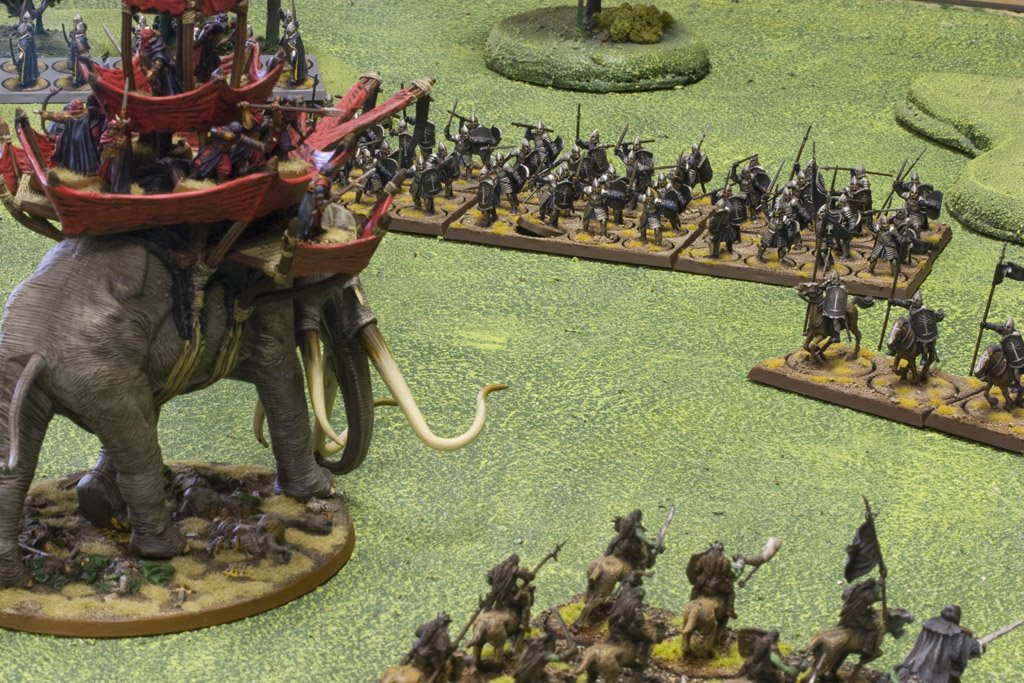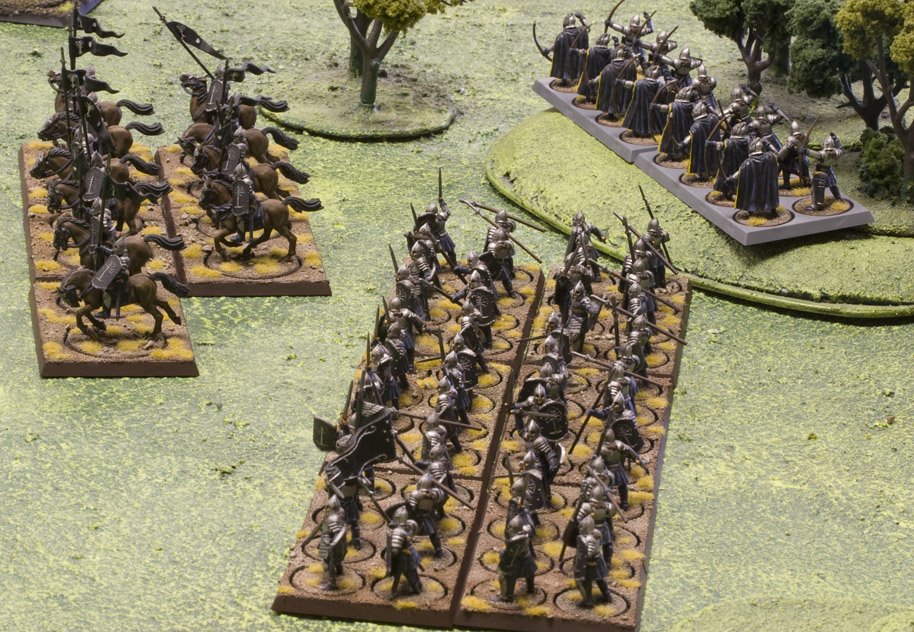REVIEW: War of the Ring

Hi all
I said you were going to get a review of War of the Ring, and here you go.
First things first. Put aside everything you have heard of the previous Lord of the Rings efforts from Games Workshop. Forget all those months of skimming over the LoTR section of White Dwarf, as well as walking right past the LoTR minis. We all did it, but just for a second, lets pretend we have never heard of this new game.
And NEW it is. What we have in War of the Ring is an entirely new game, with no similarities with previous efforts, aside from using the existing LoTR minis. This has given Games Workshop a once in decade opportunity to start a new core game from scratch, with a clean slate. The results are impressive.
This isn’t going to be one of those micro-level reviews that goes over every rule, so lets hit the highlights.
Playtime: 1-2 hours for a good sized game (2000pts). This game plays 50% to twice as fast as 40k or Warhammer Fantasy. The standard game ends after 8 turns.
Turn sequence: We have a phase interleaved sequence. Basically its I-go-u-go per phase, with a critical Priority Roll determined at the start of each full turn to determine which player will move, shoot, and assault first for that turn. Its kind of a halfway point between the full I-go-u-go of 40k and Fantasy, and the by-unit interleaved structure of Epic.
Full Information: In a nod to some other products such as Flames of War, premeasuring is allowed at all times. This is a big break from the Games Workshop main-line products, and give the game a less adversarial, more skill based feel. If you got yourself into a briar patch, its not because you couldn’t have seen it coming, and in one stroke, a lot of the uncertainty and potential deception that one can find in 40k & Fantasy is swept away.
Companies and Formations: Armies consist of formations which are composed of companies of either 8 30mm based infantry models or 2 40mm based cavalry models (in those cool plastic movement trays). For all practical purposes, the individual models are wound counters for the company, making this once again an interesting halfway point between 40k and Epic.
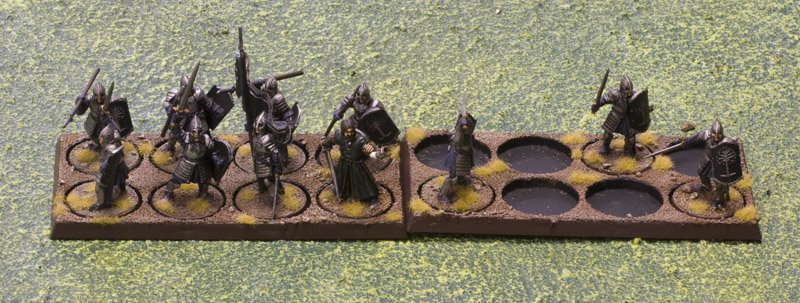
Movement: Movement is handled with a trim set of rules governing how to position and move formations. Its a lot easier that it seems, and plays rather like a very fast moving version of the Fantasy Battle movement phase with all the irritating fiddly bits of wheeling, changing formation, and the like thrown out.

Shooting and Assault: Both of these are handled very cleanly with an overall higher bar to strike and wound targets that you are used to in the existing games, due to the lack of saves! Once you’ve nailed the bad guys, they are out of there, very similar to infantry in Epic.
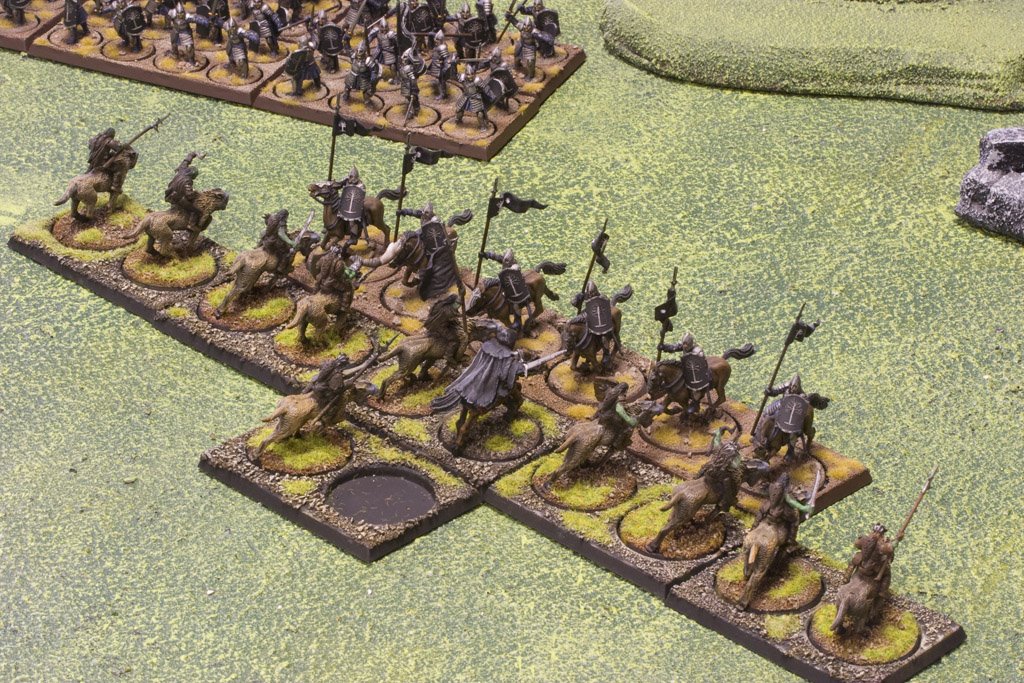
Morale: After most combats, checks are made and formations occasionally flee, but generally, units just step back and reassess the situation and prepare to reposition or duke it out again the next turn. While not as historically accurate as the rapid chain reaction panic and routing that you often find in Fantasy, the War of the Ring system is a lot more fun, and tends to keep both players “stuck in” later into the game.
Heroes: After all the previous LoTR games, you may well be wondering “It is really all about Frodo?” It is and it isn’t. Heroes and villians are aplenty in the game, but with rare exceptions, they are all upgrade characters for formations. What this means, is that yes, Boromir is an Ork buzzsaw, but if you just pound his unit from afar with war machines, or hit him in a well coordinated flank assault, he’s going down just like all the dudes around him. In short, you can emphasize heroes if you wish (and there are some really mean ones), but they don’t equal an automatic victory and a good general can deal with them with practice.
Armies: The best part of War of the Ring for me is the army section. In a throw back to the early days of Warhammer 40k and Fantasy, you get EVERY ARMY in the game in the core book. You just buy this one book, and add minis. There are 10 armies (5 good and 5 naughty), and the forces of good and evil are balanced on the tabletop.
Minis: Virtually the entire range is ready to go after years of buildup with the previous LoTR games. With everything from the terrifying Mumak to the enchanting Goldberry, you can have a grand time building up an army that strikes your fancy after reading the books or watching the films. Many of the minis are quite well priced with several core boxed sets being in the range of $1 per model.
Conclusions: I’m not going to tell you this game is the greatest thing since sliced bread, nor will I tell my fellow Warhammer 40k and Fantasy enthusiasts to drop your current projects, sell them on ebay, and take up War of the Ring. What I will say is Matthew Ward and Jeremy Vetock have done right by Professor Tolkien. This is a strong product. War of the Ring is easily accessible for new players, has a deep miniatures range to back it up, and offers a refreshing “third way” in comparison to the Warhammer 40k and Fantasy product lines which are burdoned with decades of legacy and expectations from the fickle playerbase (that would be us). It has the power of one of the strongest licences on the planet to pull in new players, and is the least burdonsome on the checkbook for them as well.
~I would say in closing to not expect War of the Ring to go away any time soon, and the next time you see a pair of players throwing down at a tabletop near you, don’t saunter on by with your nose turned up. Stop for a few minutes and check out the action. You may decide to linger for a bit in Middle-earth.
4 Stars (out of 5)

